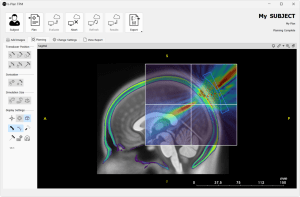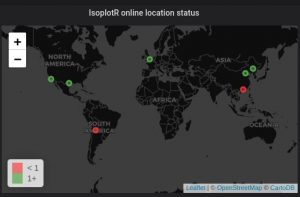Workshop on Open-Source Software for Surgical Technologies
By m.xochicale, on 20 December 2024
To champion the creation of sustainable, robust, and equitable digital healthcare systems that prevent the perpetuation of healthcare inequalities, ARC researchers took the lead in organising the second workshop on Open-Source Software for Surgical Technologies at the Hamlyn Symposium on Medical Robotics on June 28th, 2024.
The workshop focused on a key question: how can we transform open-source software libraries into sustainable, long-term supported tools that are translatable to clinical practice? To address this, the event brought together engineers, researchers, and clinicians from academia and industry to present their work, discuss current progress, challenges, and trends, and lay the foundation for building a collaborative community around Open-Source Software Innovations in Surgical, Medical and AI Technologies.
In this post, we are excited to share recordings of our exceptional lineup of speakers and celebrate the poster awardees from the workshop, along with Zenodo links to other posters. The talks and posters spanned a variety of topics, including certification, commercialisation, and case studies of open-source software in research and industry scenarios. This workshop highlighted the profound impact of open-source software in advancing surgical technologies and medical innovation.
Speakers
- Introduction to the workshop by Miguel Xochicale (UCL) and Eva C. Herbst (ETH) [Talk]
- Xenophon Papademetris (Yale) discussed Medical Software, Regulation, and Related Challenges [Talk]
- Kevin Cleary (Children’s National) provided a Historical Perspective on Open-Source Software for Medical Robotics and Imaging, highlighting lessons learned for managing open-source projects [Talk]
- Sonia Pujol (Harvard Medical School) and Colton Barr (Queen’s University) presented on Open-Source Neuronavigation for Low-Resource Healthcare Settings [Sonia’s talk] [Colton’s talk]
- Andres Diaz-Pinto (NVIDIA) introduced MONAI Label, an open-source tool for image labelling and learning [Talk]
- Mikael Brudfors (NVIDIA) showcased Accelerating AI Medical Device Streaming Workflows with NVIDIA Holoscan [Talk]
- Shashank Sharma (KARL STORZ VentureONE) spoke on Enabling Software-Defined Medical Robotics Using Open-Source Software [Talk]
- Andrew Wichmann (Johns Hopkins Technology Ventures) explored Commercial Open-Source Software [Talk]
- Micha Pfeiffer (NCT Dresden) delved into Software-Driven Computer-Assisted Navigation in the Age of Deep Learning [Talk]
- Tamás Haidegger (Óbuda University) discussed Open-Source Software Supporting Product Development: Sustainability versus Certification [Talk]
Watch all the recorded talks on this YouTube Playlist.
️Poster awardees
Congratulations to all the awardees for their outstanding contributions to advancing innovation in surgical technologies!
Best Poster Award
Martin Huber et al. from King’s College London “LBR-Stack: ROS 2 and Python Integration of KUKA FRI for Med and IIWA Robots”
GitHub: https://github.com/lbr-stack/lbr_fri_ros2_stack/
arXiv: https://arxiv.org/abs/2311.12709
Runner-Up Awards (Three-Way Tie)
- Keisuke Ueda et al. from Medical DATAWAY “Automated Surgical Report Generation Using In-context Learning with Scene Labels from Surgical Videos” Poster in Zenodo https://zenodo.org/records/12518729
- Mikel De Iturrate Reyzabal et al. from King’s College London “PyModalSurgical. An image-space modal analysis library for surgical videos: generating haptic and visual feedback” Poster in Zenodo: https://zenodo.org/records/12204075
- Ewald Ury et al. from KU LEUVEN “Markerless Augmented Reality Guidance System for Maxillofacial Surgery”
See other posters Peter Kazanzides et al., dVRK-Si: The Next Generation da Vinci Research Kit, Reza Haqshenas et al., OptimUS: an open-source fast full-wave solver for calculating acoustic wave propagation with applications in biomedical ultrasound.
Get in touch
- Join our Discord server: https://discord.gg/P6wB44Ftft
- Star our GitHub repo: https://github.com/oss-for-surg-med-ai-tech/workshop-hamlyn2024
- Follow our GitHub organisation https://github.com/oss-for-surg-med-ai-tech/
- If you are still interested to contribute as co-author of a coming white-paper on “Open-Source Software for Surgical, Medical and AI Technologies: Challenges and opportunities” please send an email to m.xochicale@ucl.ac.uk or raise a new issue.
- If you are interested in co-organising or participating in next year’s workshop, we would love to hear from you!
We can’t wait to see you again next year!
Warm regards, Eva, Stephen, & Miguel
#HSMR24 #HamlynSymposium2024 #Healthcare #OpenSource #ArtificialIntelligence #SurgTech #MedTech #AITech
 Close
Close









